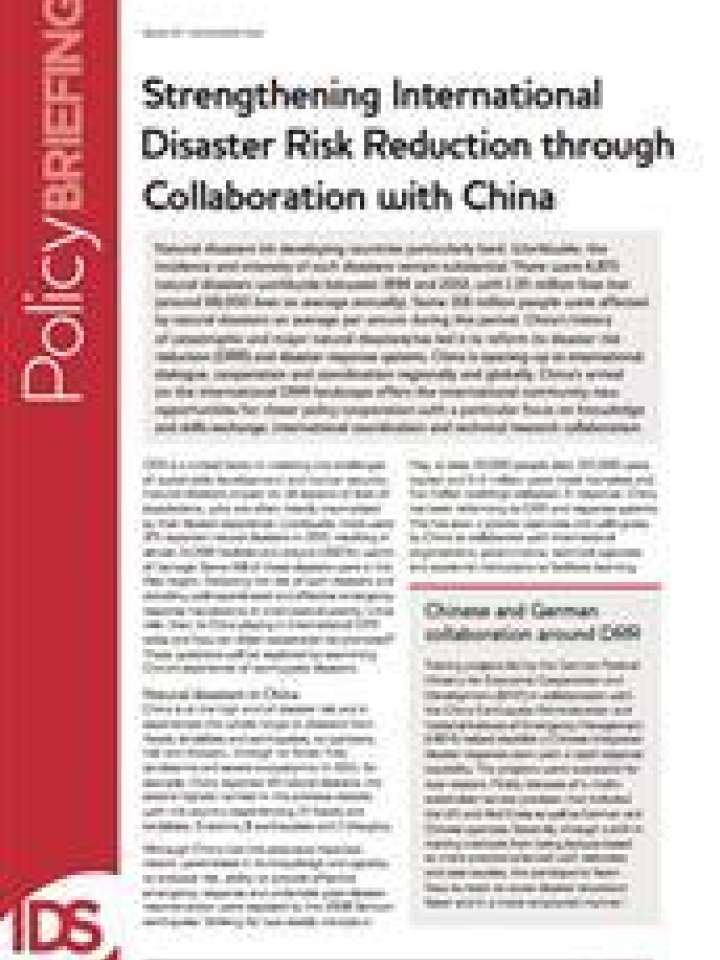Strengthening international disaster risk reduction through collaboration with China
This document reviews the role of China in strengthening international disaster risk reduction (DRR), a critical factor in meeting the challenges of sustainable development and human security. China's arrival on the international DRR landscape offers the international community new opportunities for closer policy cooperation with a particular focus on knowledge and skills exchange, international coordination and technical research collaboration.
China's history of catastrophic and major natural disasters has led it to reform its disaster risk reduction and disaster response systems. China is opening up to international dialogue, cooperation and coordination regionally and globally. In accordance, the document presents the following policy recommendations:
National and international policies should promote efforts to:
- Build on the existing international collaboration with NIEM, with a wider range of international DRR agencies seeking to form working relationships with the emerging knowledge hub.
- Develop the existing triangular cooperation such as the China–Japan–Korea cooperation, that involves both developing and developed countries or multilateral organisations.
- Respond to China’s desire to strengthen international knowledge transfers through enhanced data-sharing related to disaster anticipation and resilience.
- Mainstream international private–public sector DRR cooperation with China, broadening and deepening knowledge-sharing practices.
- Ensure that the knowledge community is inclusive, emphasising the central importance of public disaster awareness, participation and preparedness through civil society and community participation.
- Focus on Risk Perception Analysis as a core element in knowledge-exchange.
International coordination
- DRR policy coordination in China needs to prioritise the Road Map for the Implementation of the Sendai Framework to facilitate effective, coordinated implementation strategy and operationalisation and to work through specific functional initiatives flowing from Sendai.
- Promote further coordination through Europe's existing range of networks and programmes.
- Policy coordination is usefully prompted through engagement with China’s National Forum on Comprehensive Disaster Risk Reduction and Sustainable Development as well as with its national DRR and emergency response agencies and civil society organisations.
Technological research collaboration
- The Sendai Framework emphasises the importance of technical collaboration. Primary policy pathways include the 2015 Tokyo Statement on new science and technology cooperation, UNISDR Science and Technology Conference on the implementation of the Sendai Framework as well as the potential for inter-regional collaboration through the EU DRM Knowledge Centre’s annual scientific seminar.
IDS Policy Briefing, issue 127, November 2016.
Explore further
